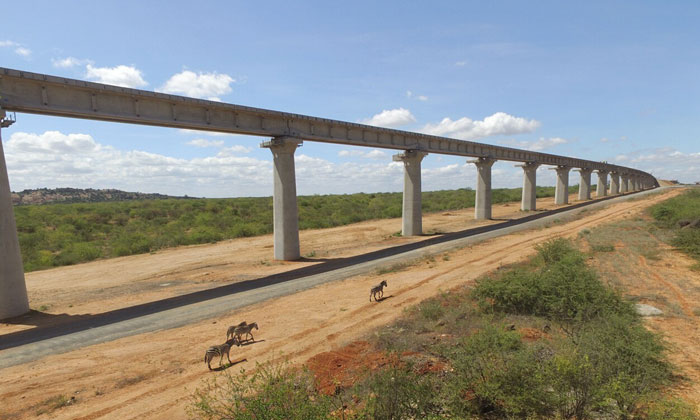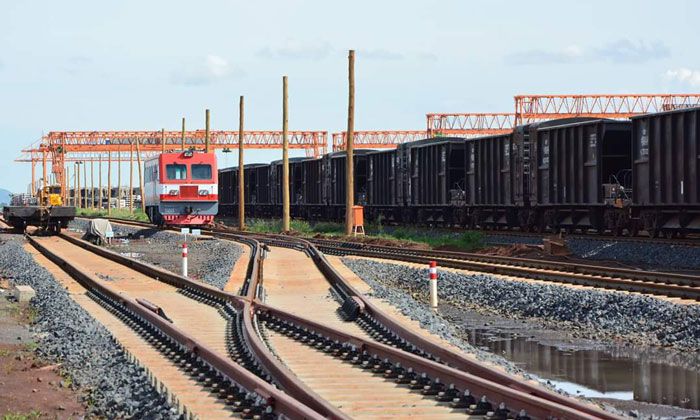Kenya’s rail sector and data needs
Posted: 2 August 2017 | James Gachanja | No comments yet
In part two of our features on Kenya’s railways, James Gachanja, Policy Analyst for Infrastructure and Services, goes into depth about the history of the rail sector in Kenya, the development of the Standard Gauge Railway, and the importance of big data in the industry.


Credit: SGR Facebook
The railway transport sector in Kenya has faced challenges that have affected its contribution to the economy. This has largely been associated to underinvestment in the sector and a weaknesses in management. The first railway in the country was built by the Imperial British East Africa company in the 1890s and arrived at Kisumu in around 1901. The British Government then expanded the rail network and built branch lines to other strategic locations.
In the 1960s, the railway sector was administered by the East African Railways and Harbours until the break up of the East African Community in 1977. The segmented management of the railway by Uganda, Kenya and Tanzania contributed to the decline of the sector. Furthermore, administration of the railway and port in Kenya was split and the railway operations were hampered by underfunding. Kenya Railways was unable to keep up with maintenance of the track and rolling stock due to lack of investment by the government. The outcome was a decline in the market share of rail transport to approximately 2% of cargo, giving way to the dominance of road freight.
The Government of Kenya, in conjunction with Uganda, entered into a concession with Rift Valley Railway in an attempt to revive the sector in 2006. However, the concession initiative fell short in meeting its objectives and the sector continued to witness poor performance. Analysis indicates that the concession failed due to inadequate appraisal and underestimation of the investment needed to revamp the infrastructure and rolling stock, which could be attributed to lack of data and information on infrastructure and operational performance of the railways. It is evident that there was also inadequate due diligence on the capabilities of the investors. In effect, the concessionaire was unable to operate and maintain railway services as per the contracted targets and standards. Failure to resolve the operational challenges of the concession would see Kenya Railways revert to operation of the Meter Gauge Railway services.
In 2014, the Government of Kenya undertook the transformation of the country’s railway sector by developing the Standard Gauge Railway (SGR) project with support from the Chinese Government. The project aimed to provide high performance railway infrastructure, equipment and services along the route from the Port City of Mombasa to the Kenyan and East Africa Community (EAC) hinterland. The motivation of the project was to ease the cost of doing business by lowering transport costs and time, as well trade facilitation and integration in the EAC. The first phase of the SGR between Mombasa and Nairobi was completed in June 2017 and passenger operations launched under the Madaraka Express service. Freight operations are scheduled to commence towards the end of 2017.


Credit: SGR Facebook
Learning from the past experiences, Kenya Railways adopted the framework of a management contract for operation and maintenance of services on the SGR. The contracted Chinese operator will provide the services for an interim period and thereafter taken up by Kenya, once sufficient local capacity has been developed.
Based on the historical and current performance, as well as the envisaged future role of the railway sector, it emerges that big data is important in all aspects of railways. This includes planning, appraisal, design, construction and operation, and maintenance. At the planning and appraisal stage, big data is critical for feasibility assessment to test for viability of project options and to forecast demand-supply scenarios. The data would need to capture passenger and freight dynamics.
Following from this assessment, the design stage would need to optimise the infrastructure and facility capacity requirements with the operational capacity requirements. The information at this stage is critical in creating a procurement and investment plan that can inform phasing of the project in line with constrained budgets. The construction phase needs would largely be met by the contractors with scope for the project proponent supervisory team to have access to key technical data.
The operation and maintenance stage, however, has been observed to be the Achilles’ heel for railways in developing countries and Kenya in particular. Therefore, big data provides a great opportunity for Kenya Railways to effectively monitor the performance of the contracted operator and evaluate attainment of Public Service Obligations.
Big data will provide indicators designed to monitor efficiency, quality of services, safety and security in both passenger and freight operations. Through the use of integrated data systems between Kenya Railways and the operator, and the use of dash boards for example, critical operational and strategic decisions can be made to enhance performance. The long-term acquisition and maintenance of data will be important in creating databases for the development of analytical models for decision support.
Already at this nascent stage of the Madaraka Express service, the railway regulators are keen to capture data on passenger demand, travel patterns (origin and final destination) as well users’ experience on a daily basis. The information is seen as useful for ticketing, scheduling of services, and responding to customer complaints. The hotel industry in the coastal town of Mombasa can also rely on the data for marketing to enhance bed occupancy.
Big data is therefore important for tactical, strategic and policy decision making across the macro and micro levels of the railway transport industry in Kenya.








